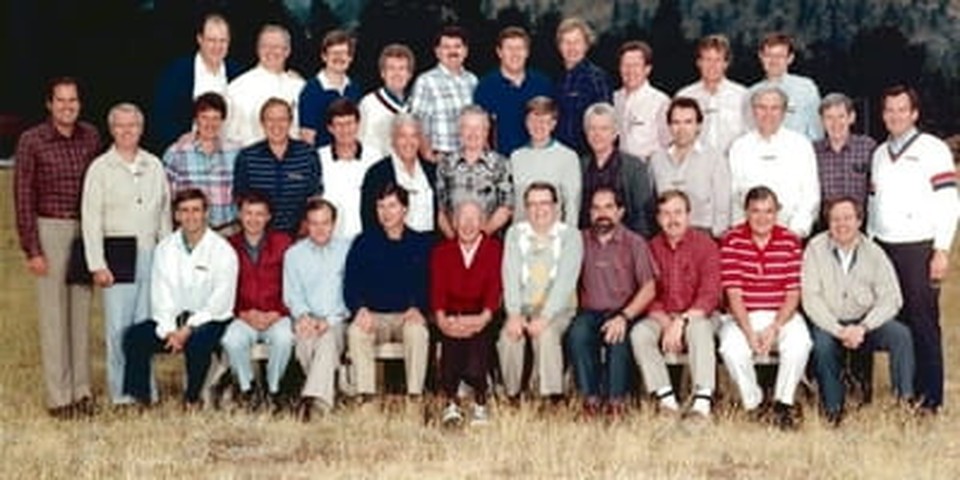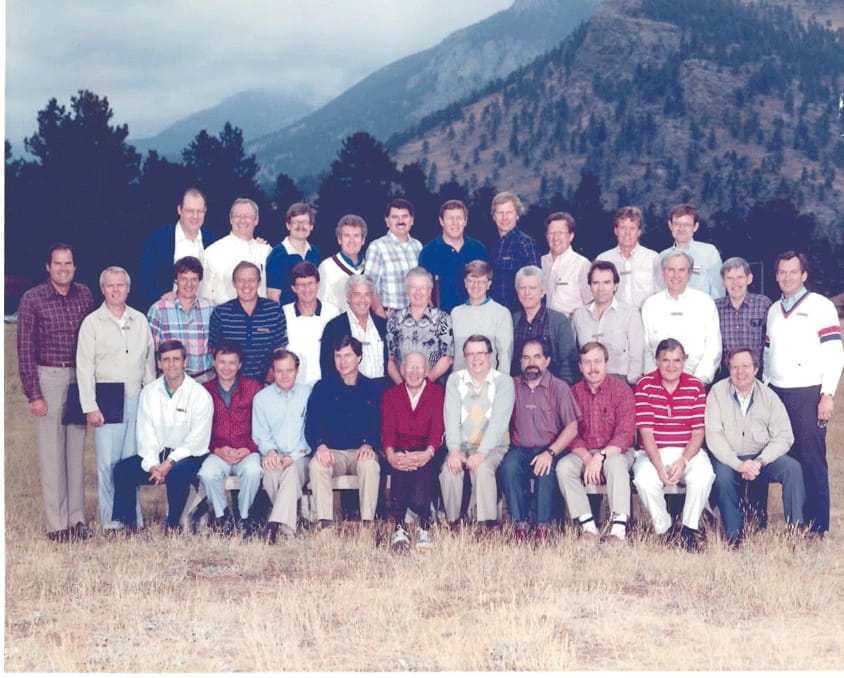The Friendship That Changed the Church—And the World

Rick Warren.
Randy Pope.
Bill Hybels.
These are just a few of the names that are synonymous with “mover and shaker” when it comes to the Church—and the world, for that matter. They are known for their ability to inspire, lead and convey life-changing messages.
What most of modern evangelicalism doesn’t know is who led and inspired those people to do the work they do today.
In the 1970’s, an unlikely friendship formed that would catalyze the movement that moved these pastors to become leaders, and transform them from preacher to teacher.
Drucker & Me: What a Texas Entrepreneur Learned from the Father of Modern Management, an account of that friendship and the lessons learned through it, recently hit the bookstands. Written by Bob Buford, author of the Halftime, and leader of the organization of the same title, readers will get a glimpse of a partnership that changed many lives forever.
The Beginnings of a World-Changing Friendship
Bob Buford hit the ground running with the family broadcast and cable TV business. Until 1999, he was the chairman and CEO of Buford Television, Inc. It began with his mother and a single ABC affiliate in Tyler, Texas, and grew into a network of cable systems across the country.
When Buford was 32 years old, his mother passed away in a hotel fire, leaving him with a big business to run. He had been working in the TV business for a while, but had not experienced actually managing the company.
He felt a need for instruction. As a young manager, he was looking for somewhere to turn.
“At that point, I knew I needed help. I read everything [about management] I could get my hands on,” he said.
Then, he found Peter Drucker, the “Father of Modern Management” through reading some of his writings on leadership and management.
“Here is someone I had a lot in common with in terms of values. But still, I very carefully approached Peter and frankly, I thought he wouldn’t see me,” explained Buford.
“In fact, he was quite interested, and so I put my best suit on and tie and went to see him. He was one of the most receptive and graceful people I have ever met.”
The two talked strictly business for several years. Then, Buford began to sense a calling he didn’t fully understand, but he knew it was powerful. What he did understand is that he wanted to do work that mattered.
Death Brings Life to Calling
There was a defining moment in Buford’s midlife that would determine the next course of action. In January 1987, Buford lost his one and only child, Ross, age 24.
Buford received a call from his brother that Ross and two of his friends had decided to swim across the Rio Grande River in south Texas and were missing. When it became apparent that Ross was gone, Buford flew back home to Tyler to be with his wife, Linda.
Drucker heard the tragic news and was one of the first to offer not only condolences, but affection and grace.
“For the first time in our relationship as client-consultant, I realized that Peter cared as much for me as a fellow human being as he did for me as a young, ambitious entrepreneur,” he remembered.
That principle of caring for the client as a person would soon translate into Buford’s calling for the second half of his life (as described in Halftime).
Ross’ death also put calling into perspective for Buford: “After he died, anything I watched on TV—news, shows—and other things I did seemed trivial.”
Management: Making the Church More ‘Church-Like’
A believer in Christ, the question for Buford was never, “What do I believe?” Rather, it was, “What will I do with what I believe?”
He knew one thing: he had a passion for working with churches and nonprofit or parachurch organizations. And that was a good thing, given his mentor, because Peter Drucker had a similar vision.
“He had the perfect values for the management of nonprofit organizations and churches. I was very interested in churches, and so was he,” explained Buford. “And that’s one thing everyone needs to remember when they seek out a mentor: it is crucial to value the same things.”
Out of a common passion for nonprofits, philanthropy and management, the two men launched the Leadership Network, whose mission at the time was to “identify, connect and help high-capacity Christian leaders multiply their impact.”

The idea was to get some of the brightest and most energetic in Christian ministry in a room together to share ideas and teach one another from their personal experiences.
As Buford put it, “We would use their credibility, not ours—we were the platform, not the show. Or, as Peter once told me, ‘The fruit of your work grows on other people’s trees.’”
When Buford set out to arrange the first series of meetings where Drucker would share some wisdom, he was skeptical that preachers would want to sit in a room and listen to what a management guru would have to say about church life and ministry.
The response from these pastors would prove him wrong as they enthusiastically agreed to meet with Buford and Drucker. They were not only familiar with Drucker and his writings, but held him in high regard.
So, how would business management principles play into running a church and managing a church staff?
Drucker was very quick to observe that larger churches would be criticized for appearing too market-driven. He took care to point out to this group of pastors that “The function of management in a church is to make the church more church-like, not to make it more business-like.”
In becoming more “church-like,” the pastor would steer the church back to the very heart of its mission: to serve individuals and communities, to understand their needs and care for their souls.
“He [Drucker] would understood the tendency for institutions to gradually exist for themselves and exhorted these men to never forget their true calling,” said Buford.
Even still, there is easily overlooked “business” to be done when it comes to leading a church.
“For example, a lot of pastors, when surveyed, didn’t know how to identify talent for their staffs, fire people, or deal with practical issues rather than theoretical ones,” Buford explained.
“And that’s what the Leadership Network has done—given them the tools they need to be able to do these things effectively while contributing to a fully functional society.”
Read more about the friendship between Peter Drucker and Bob Buford in Drucker & Me: What a Texas Entrepreneur Learned from the Father of Modern Management. This book will give readers a deeper look at the partnership that changed the face of nonprofit organizations, and glean practical management—and life—advice from Drucker as it was passed on to Buford.
Joy Allmond is a writer based in Charlotte, N.C., where she lives with her husband, two teenage stepsons and two dogs. Follow her on Twitter @joyallmond.
Publication date: April 22, 2014
Originally published April 22, 2014.







